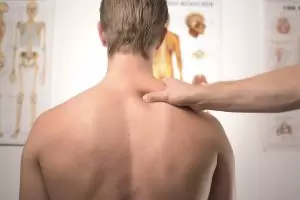Pain Management and Opioids
Chronic pain lurks in the shadows and stands over your shoulder, waiting on what seems like the most inopportune times to flare up and wreak havoc on your mental and physical health. Defined as pain that lasts months or possibly years, chronic pain affects more Americans than Diabetes, Cancer, and Heart Disease combined according to the National Institutes of Health. Pain, while unpleasant, is a normal response to tissue damage, and alerts you that something in the body is not right. Even as a normal physiological response, too much pain has negative repercussions. When the pain continues even after treatment and it begins to impact your emotional state and endurance, chronic pain begins its rigorous demand that could whirl you down a dismal path. At this point, pain management is paramount to one’s well-being.
One of the short-term treatments includes the use of prescription opioids, or a group of drugs that impacts certain receptors in the brain that relieve pain. When administered and monitored carefully, these drugs play a helpful part in a short term pain management plan. Unfortunately, opioids are highly addictive, and without proper education and support they can lead down the dismal path of pain-killer addiction. The American Society of Addiction Medicine states that four out of five new heroin users started out abusing prescription pain killers, which sadly contributes to the startling statistic of overdose related deaths. Another adverse reality associated with prescription pain killers is that they only mask the pain, rather than treat it. In an effort to create a community of individuals that relies less on opioids for pain management, physicians and pain professionals research more into effective methods for treatment. Physical therapists are one of the many groups of caring, qualified individuals that assist in these treatments.
How Physical Therapy Can Help
Physical therapists are pivotal to the success and perseverance of people recovering from injury and disease. They care deeply for the well-being of their patients, and continue their education so that they may arm themselves with the best treatment methods possible. The Centers for Disease Control and Prevention recommends physical therapy as a safer alternative to opioid usage, and they encourage it now more than ever during this nation’s relentless dependency on prescription pain killers. There are four major components that help the therapist manage pain:
- Exercise
- Under a therapist’s care, a monitored exercise plan is largely successful in pain prevention. Endorphins go a long way for someone with chronic pain.
- Manual Therapy
- This is an umbrella term for the various treatments physical therapists offer such as dry needling, mobilizations, and massage. All of these are drug-free.
- Education
- Therapists care about what you know regarding pain. They want to ensure you know alternative methods of treatment, how pain works, and what changes you can make to prevent it.
- Teamwork
- The physical therapist wants to develop a relationship with you to help you both get to the positive places. When you work together, you succeed together.
When You Should Choose PT
Even still, many individuals question when exactly it is the appropriate time to choose physical therapy. A set of guidelines can better direct someone into a mindset of choosing alternative pain management methods over opioids. In Move Forward PT, they instruct the individual to choose physical therapy over prescription pain killers under these circumstances:
- When the patient has high motivation to do more than just mask the pain
- Physical therapy uses multitudes of methods to improve a patient’s quality of life and lesson the quantity of pain.
- Opioid usage creates more risks than rewards
- The risks include depression, addiction, overdose, and withdrawal symptoms when discontinuing use. Refer to addiction statistics.
- The chronic pain is associated with low back or hip pain, fibromyalgia, or knee osteoarthritis
- An exercise plan is highly associated with pain relief in these situations.
- Pain lasts more than 90 days
- At this point the pain is chronic, and should rely on an opioid-free approach as long as the risks still outweigh the benefits.
Always consult with your physician and physical therapist on pain management plans that are opioid-free.
Research
In a recently published study, researchers wanted to see if physical therapy could be an effective means of managing chronic pain in individuals with HIV. In the subjects that received the intervention, 65.2% reported decreased amounts of pain while 28.3% reported an elimination of pain. There remains a dire need for more research on the relationship between chronic pain and physical therapy, but the current material available shines a light on an already bright future for pain management.
#choosePT


